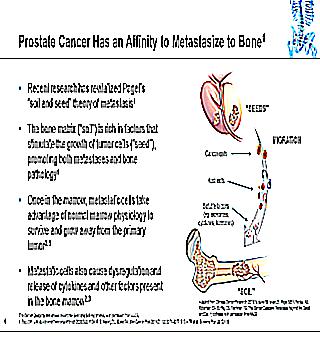Home >
Erectile Dysfunction >
Prostate Carcinoma Survival Predictions
Prostate Carcinoma Survival Predictions

Malignant neoplasms of the prostate gland are a fairly common disease. One of these diseases is prostate cancer. Quite often, Prostate cancer is diagnosed already in the serious stages of the disease. In order to reduce the growth of the disease, a special program was introduced. With the help of this program, it was possible to reduce the mortality rate of patients suffering from cancer of the reproductive system. Its essence lies in the fact that the disease is detected at the earliest stages.
Prostate Cancer Screening Program
The program includes several methods of patient examination aimed at early detection of the oncological process.
These include the following methods:
Morbidity and mortality forecast
According to the WHO, more than 80,000 patients with malignant neoplasms of the prostate are registered in Europe every year. But it is alarming that more than 50% of patients learn about their disease already at the last stages, when the desired effect will not be obtained from the surgical intervention. If we talk about the situation in the world, then every year about 200,000 males learn that they have prostate cancer. Among oncological diseases of the reproductive system, prostate carcinoma ranks 3rd in Europe. In the United States, this pathology takes the title place.
The mortality rate directly depends on two main factors, namely:
- the level of neglect of the pathology (at what stage the disease was detected).
- the level of adequacy of the prescribed treatment.
According to the statistics of diseases, only 30% of patients manage to detect the disease in the early stages. Quite often, the spread of metastases is found in precisely those patients who were first diagnosed with cancer.
There is evidence of a predisposition to the formation of malignant neoplasms of the prostate by ethnicity. It is known that representatives of the Negroid race are more susceptible to this disease. Representatives of China and Japan are more resistant to the development of oncological diseases.
Factors influencing the development of malignant neoplasms of the prostate
Thanks to research, the most significant factors contributing to the occurrence of prostate cancer have become known.
Life expectancy in an oncological process largely depends on the degree of differentiation of cancer cells. For example, with a low level of differentiation, 10% of patients die within the first 10 years of the disease. In turn, with a high level of differentiation, this indicator increases 6 times. In advanced stages of cancer, the average life expectancy of patients is 3 years.
Survival rate depending on the methods of treatment used
If a patient is diagnosed with prostate cancer, then the prognosis of survival largely depends on the level of treatment. The main method of surgical treatment for prostate cancer is the removal of the prostate itself. Thanks to modern equipment, prostatectomy has become possible to be performed using a minimally invasive method, using laparoscopic equipment. There is a low mortality rate after this intervention, within 1% of the total number of operations.
When performing prostatectomy in patients in the first two stages of the disease, the survival rate during the first 10 years is 90%. In turn, in patients with stage 3 prostate cancer, the prognosis is no more than 80%. After surgery, patients with grade 3 disease need prophylactic therapy with chemotherapy drugs. This therapy reduces the likelihood of relapses and has a beneficial effect on the survival rate.
If a patient with stage 1 or 2 of the oncological process has contraindications for surgery, then radiation therapy is prescribed. Brachytherapy is considered an alternative to radiation therapy. With the timely implementation of this therapy at 1 or 2 stages of the disease, the probability of recovery is more than 90%. For patients with stage 3 cancer, it is advisable to use brachytherapy in combination with external radiation. At stage 4 of the disease, the main treatment is combined with symptomatic therapy. In symptomatic treatment, special attention is paid to relieving pain.
Clinical survival projections
At stage 1 of prostate oncology, it is extremely difficult to predict the course of the disease. X-ray methods are ineffective at this stage. Cancer cells can be detected only by biopsy, the indication for which is the excess of the norm in the blood of the prostate-specific antigen. Also, with the help of puncture of the glandular tissue, cancer cells can be detected.At stage 1 of a malignant neoplasm, the entire pathological process is isolated and does not have time to germinate in the tissue of the gland itself. In this situation, life expectancy for 10 years is about 100%.
Predictions for stage 2 of the oncological process. At this stage, the tumor is palpable quite well. The size can be up to half the area of the prostate itself. The tumor does not go beyond the gland, but has grown deep into it. At this stage, the chances of survival within 10 years are 60%.
The prognosis of prostate cancer at stage 3 is rather poor. Surgical intervention in combination with radiation and hormonal therapy is imperative. The type of tumor also affects the patient's survival. On average, the survival rate of men under these circumstances within 5 years will be about 50%.
If the patient has a confirmed diagnosis of prostate cancer, then the prognosis can be given only on the basis of several important factors, such as the stage of development of the disease, the patient's age and the adequacy of the treatment. Prostate cancer is a real threat to the life of men. Even a local form of the oncological process, in the long term, will lead to the death of the patient, if the necessary treatment is not carried out.



























